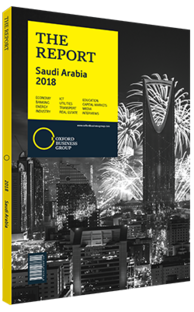Saudi Aramco prepares for initial public offering
On January 4, 2016, with Brent crude valued at $30 per barrel, Crown Prince Mohammed bin Salman Al Saud first mentioned the possibility of selling off a small part of the state oil company, Saudi Aramco. Even with global oil prices in the doldrums, his mention of a possible IPO of the firm in a rare interview with The Economist sent investors into a frenzy of expectation and speculation. Could the closely guarded accounts of the world’s wealthiest government-owned oil company reveal the full extent of the riches beneath the Arabian sands? It is possibly a $2trn question, and one that cannot be answered until the IPO takes place.
Purpose
The decision by the deputy crown prince to float a small percentage of the energy company was not a knee-jerk reaction to the initial fall in the value of oil, nor the subsequent impact on revenues. It was considered after almost a year into his tenure as the chairman of the Council of Economic and Development Affairs – a year in which the value of Saudi Arabia’s oil and gas assets plummeted. While Prince Mohammed bin Salman witnessed the impact of the fall in global oil prices first hand, he also had the power to craft a new response to an issue that had vexed Saudi economists since the discovery of national oil. The IPO is to be the opening gambit in a strategy designed to unlock the investment potential of the oil wealth created by Saudi Aramco’s platforms and wells, and leverage the company’s value to realise greater returns for citizens.
Control of Saudi Aramco will pass to the country’s sovereign wealth fund, which will be given the flexibility to seek profitable investments all over the world. Prince Mohammed bin Salman estimates that the Public Investment Fund (PIF) will be the largest global investment vehicle after the floatation, with assets of $2trn or more. The PIF – which traditionally has held a low profile with stakes in former state-owned enterprises such as Saudi Basic Industries Corporation and Saudi Telecommunications Company – has invested $3.5bn in ride-hailing service Uber; $20bn in the alternative investment fund Blackstone, becoming the main investor in a $40bn initiative to upgrade US infrastructure; and up to $45bn in Japan’s SoftBank technology fund.
Valuations
In October 2017 it was announced that the release of around 5% of the energy giant’s assets is on track for 2018. Prince Mohammed bin Salman has indicated the company will be listed on Saudi Arabia’s Tadawul stock exchange, but this does not prevent a secondary listing in London, New York, Tokyo or Toronto. Well before details arose on the date of the IPO, speculation began on the true value of the company. Based on an oil price of $50 per barrel in the short term and $60 per barrel in the medium term, The Financial Times estimated that Saudi Aramco was worth between $880bn and $1.1trn. If the company was valued at $900bn, the sale of a 5% stake would raise $45bn.
While value speculation continues, Saudi Aramco has appointed JP Morgan Chase & Company, Morgan Stanley and HSBC as international financial advisers, in addition to Moelis & Company and Evercore. NCB Capital and Samba Capital were selected as local advisers.
Strategic Measures
Although the floatation has the potential to inject capital into sectors that will help reach diversification objectives, government moves are still designed to optimise value in the company. A tour of Asia in spring 2016 saw Saudi Aramco commit $21.5bn to build refineries in the region, deals that effectively put long-term crude oil supply agreements on the order books (see analysis). Furthermore, as de-facto head of the Organisation of the Petroleum Exporting Countries, Saudi Arabia has led by example in production cuts designed to reduce global inventories and rebalance the oil market. In May 2017 the reductions were extended for a further eight months to help the price of crude oil recover, with hopes of attaining a higher valuation of Saudi Aramco in the spring of 2018. In March 2017 officials agreed to give Saudi Aramco a tax cut backdated to January 1, reducing its liability from 85% to 50% and further sweetening the deal for investors.
You have reached the limit of premium articles you can view for free.
Choose from the options below to purchase print or digital editions of our Reports. You can also purchase a website subscription giving you unlimited access to all of our Reports online for 12 months.
If you have already purchased this Report or have a website subscription, please login to continue.

